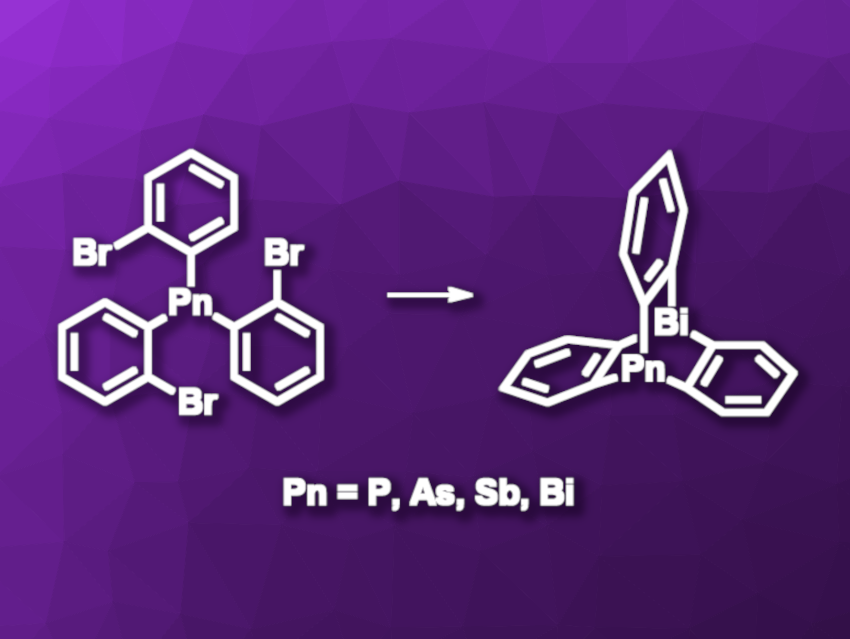Triptycenes are symmetric, paddle-wheel like structures in which three benzene units are connected by two bridgehead CH units. They have applications, e.g., in porous polymers and supramolecular chemistry. The bridgehead CH units can be formally replaced with heavier pnictogen atoms (Pn = P–Bi) to obtain interesting analogues. When both bridgeheads feature the same element, this leads to 9,10-dipnictatrypticenes. Examples of 9,10-dipnictatrypticenes are known, as are some mixed dipnictatriptycenes. However, only one P/Bi derivative has been reported (without solid-state structural data) and no combinations of the type As/Bi or Sb/Bi had been known so far.
Crispin Lichtenberg, University of Marburg, Germany, and colleagues have synthesized the first series of parent 9-bisma-10-pnictatriptycenes, i.e., Bi(C6H4)3Pn (Pn = P–Bi, pictured above on the right). The compounds were isolated and fully characterized. The team used a two-step procedure. They first prepared suitable tris(2-bromophenyl)pnictanes (pictured above on the left) from 1-bromo-2-iodobenzene, which was reacted with i-PrMgCl and a corresponding pnictogen(III) halide. The resulting precursor was then lithiated using tert-butyllithium, followed by a reaction with bismuth(III) chloride or bromide, giving the desired bisma-pnicta-triptycenes in yields of 25–58 %.
The products were characterized using NMR spectroscopy and single-crystal X-ray diffraction, their bonding situation was studied using density functional theory (DFT) calculations, and their behavior as Lewis bases was investigated. According to the researchers, the products could potentially serve as linear building blocks for the construction of multinuclear coordination compounds.
- Fusing Triphenylbismuth and PnPh3 (Pn = P–Bi): Synthesis, Isolation, and Characterization of 9-Bisma-10-Pnictatriptycenes,
Dennis Rottschäfer, Anna Pachkovska, Xiulan Xie, Kai Oberdorf, Sascha Reith, Andreas Stoy, Crispin Lichtenberg,
Inorg. Chem. 2023.
https://doi.org/10.1021/acs.inorgchem.3c02802




